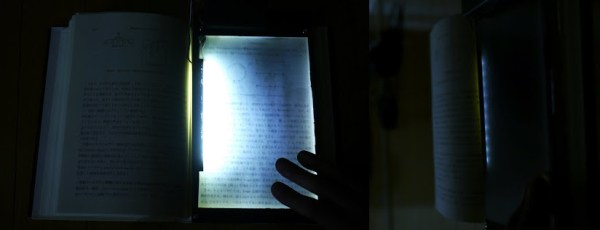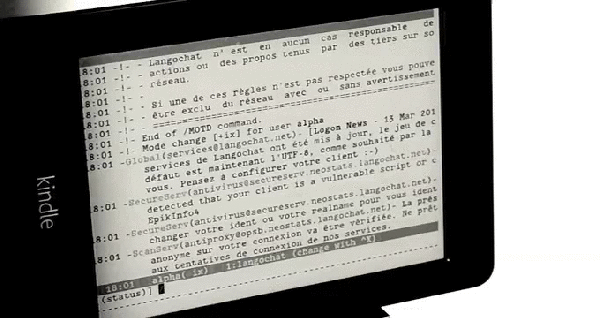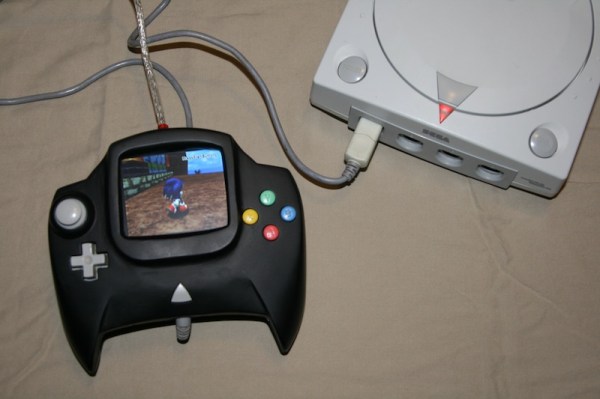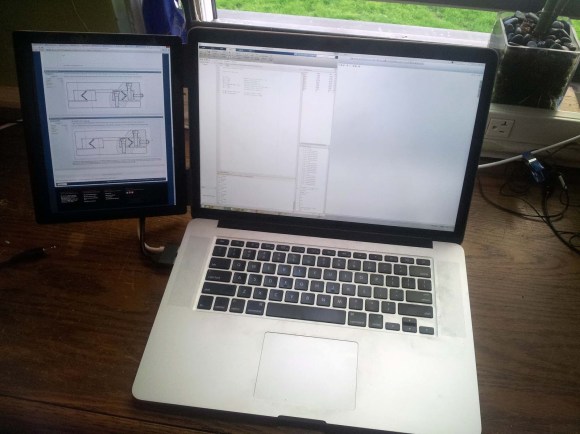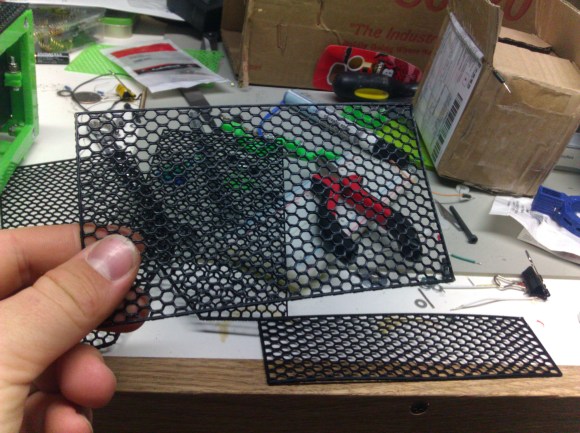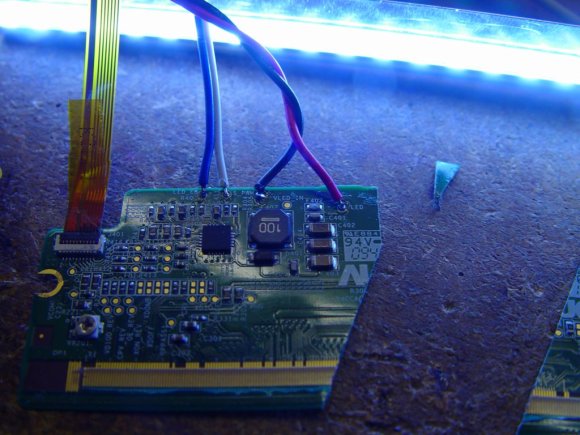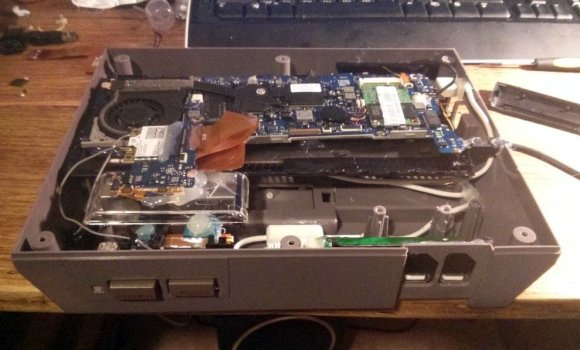Consistent contributor [Ken] has cooked up another contraption with his directional booklight. Combining an LED strip and privacy screen filter inside a wooden enclosure, this handy tool is made for someone who wants to read in bed without disturbing anyone else. The booklight sits on top of the page, the LEDs light up just the given area, and because the privacy screen only allows light to come straight off the page, only the reader can see any light and any other viewing angle is obscured.
[Ken] thought of everything. Rather than have the light stay on while the booklight is lifted to turn the page and possibly flash an unsuspecting slumberer, a tactile switch on the underside turns the light on only when it is pressed against the page, allowing very little light to escape.
Future upgrades include another switch on top to detect when the book is closed, and an accelerometer to detect when the reader may have fallen asleep.
We’ve reported a few of [Ken]’s projects before, like his 3D popup cards, unique weather display, and semi-real-life Mario Kart
Continue reading “Directional Booklight Invisible To Everyone But You”

